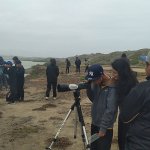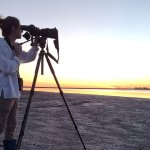By Abril Heredia – Terra Peninsular A.C. and Eduardo Palacios – Centro de Investigación Científica y de Educación Superior de Ensenada (CICESE)
Translated to English by WHSRN Executive Office
In January 2024, the thirteenth season of winter shorebird monitoring as part of the Migratory Shorebird Project (MSP) was completed at 22 priority shorebird sites in coastal lagoons in northwestern Mexico. Shorebird surveys are conducted during the non-breeding season in Mexico and ten other countries from Canada to Chile, to generate data to detect patterns and trends in the distribution and abundance of shorebird species and changes in the condition of the habitats they use along the Pacific Flyway.
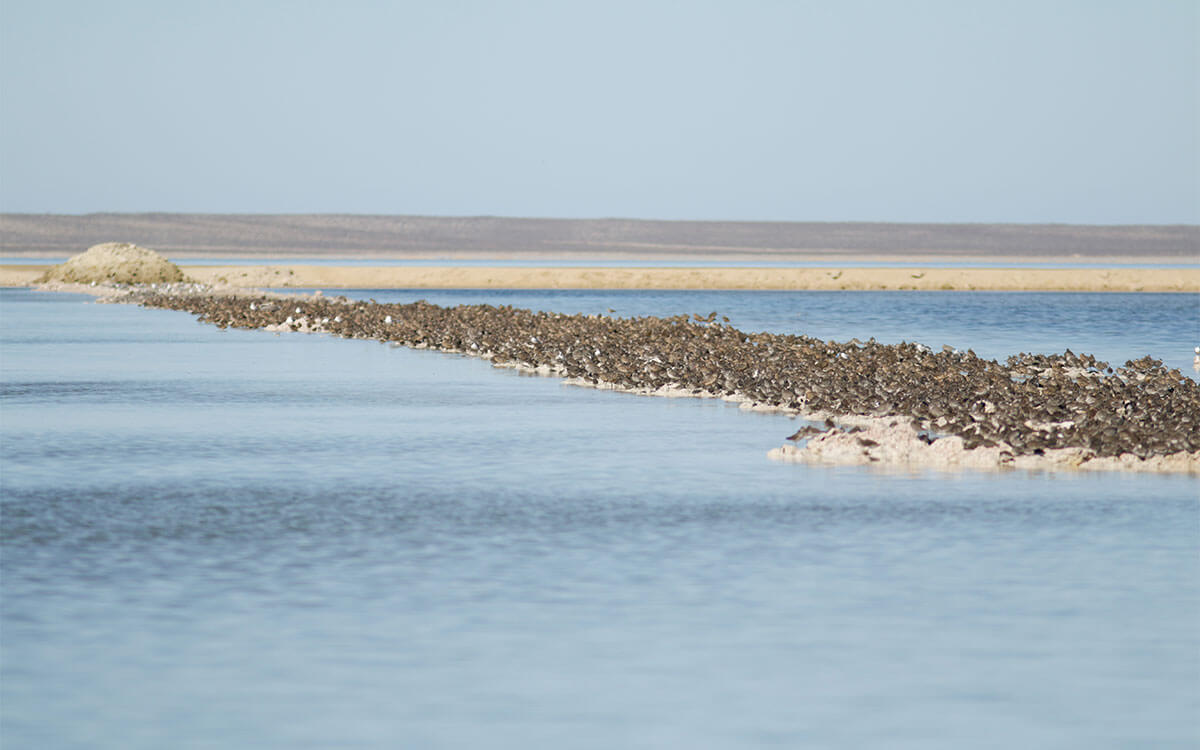
Thousands of shorebirds resting on the edge of a salt production pond at WHSRN site Complejo Lagunar Ojo de Liebre. Photo: Abril Heredia.
At each winter season in the Baja California peninsula a monitoring team is formed, this year consisting of eight people visiting 10 sites – six of which are part of the Western Hemisphere Shorebird Reserve Network (WHSRN). Volunteer participation is key to the MSP surveys as visitors and students from partner organizations can collaborate and develop knowledge around a project that includes science, outreach, social engagement, and strategic action. In addition, the daily work becomes more efficient, favored by the experiences of each member. A successful season results from coordination among team members and, depending on the site visited, coordination with collaborators from federal agencies such as the National Commission of Protected Areas (CONANP); academic institutions such as Ensenada Center for Scientific Research and Higher Education (CICESE), Universidad Autónoma de Baja California Sur (UABCS), and Northwest Biological Research Center CIBNOR; private companies such as Exportadora de Sal, S.A.; non-governmental organizations such as Terra Peninsular; and fishing cooperatives that provide care and support
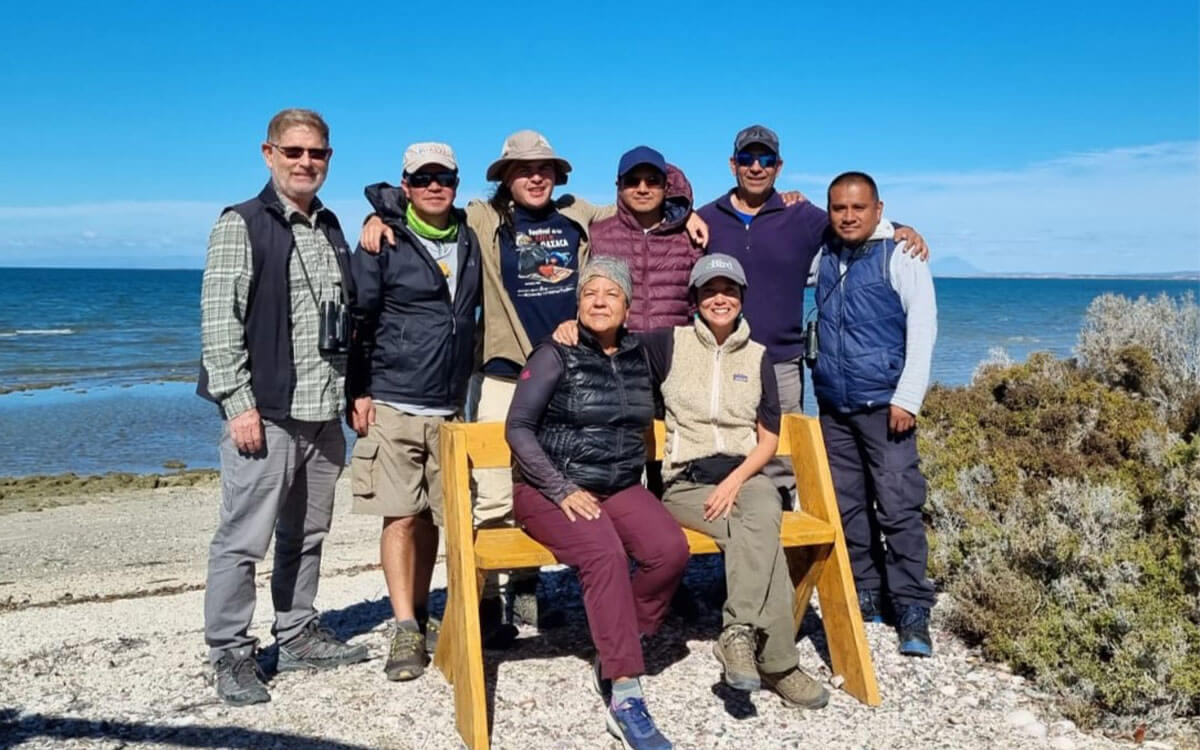
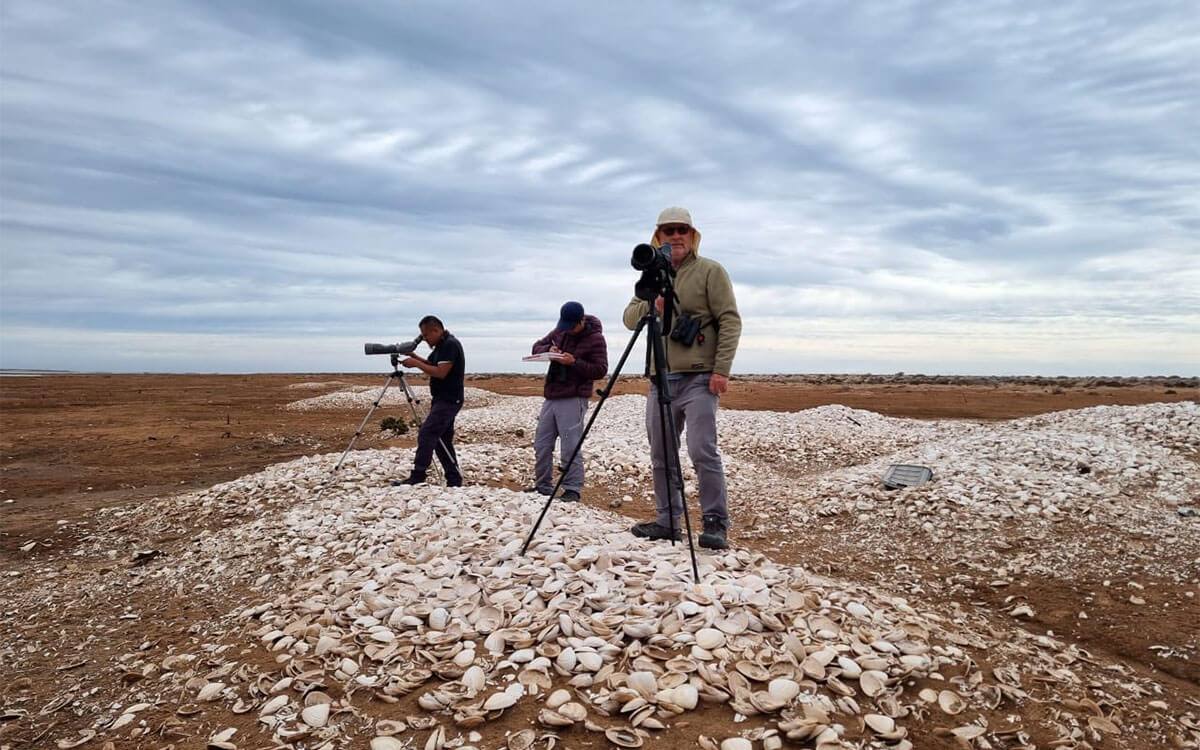
Left: Winter shorebird monitoring team 2024 for the Migratory Shorebird Project. Photo: Abril Heredia. Right: Team counting shorebirds. Photo: Salvador Gómez del Ángel.
Traveling nearly the entire length of the Baja California Peninsula, approximately 683 miles, the team crosses deserts with vast plateaus to reach the important shorebird sites – large coastal lagoons with marshes, mudflats, bars, and sandy beaches where thousands of shorebirds gather to rest and feed.
The surveys provide an opportunity to observe the dynamics of shorebirds in their environment, their behaviors, their interactions, and to examine the human social environment at the different sites used by shorebirds. Anthropogenic use and the level of infrastructure vary among sites. In Laguna San Ignacio, for example, ecotourism and commercial fishing are the main activities. In contrast, further north is a site of one of the world’s largest salt exporters and a shorebird sanctuary of Hemispheric Importance. A tour of the exporter’s facilities reveals the vast extent to which habitats have been transformed into infrastructure for salt production, but a boundary between the use of natural and human-altered habitats by shorebirds is unclear. For example, there are mudflats where thousands of Western Sandpipers (Calidris mauri) and dozens of shorebirds species come to feed at low tide, and close by is a salt production pond with a 656 feet-long border where Marbled Godwits (Limosa fedoa), Dowitchers (Limnodromus sp. ), American Avocets (Recurvirostra americana), Western Sandpipers, Red Knots (C. canutus) and Black-bellied Plovers (Pluvialis squatarola) gather, in numbers in the thousands.
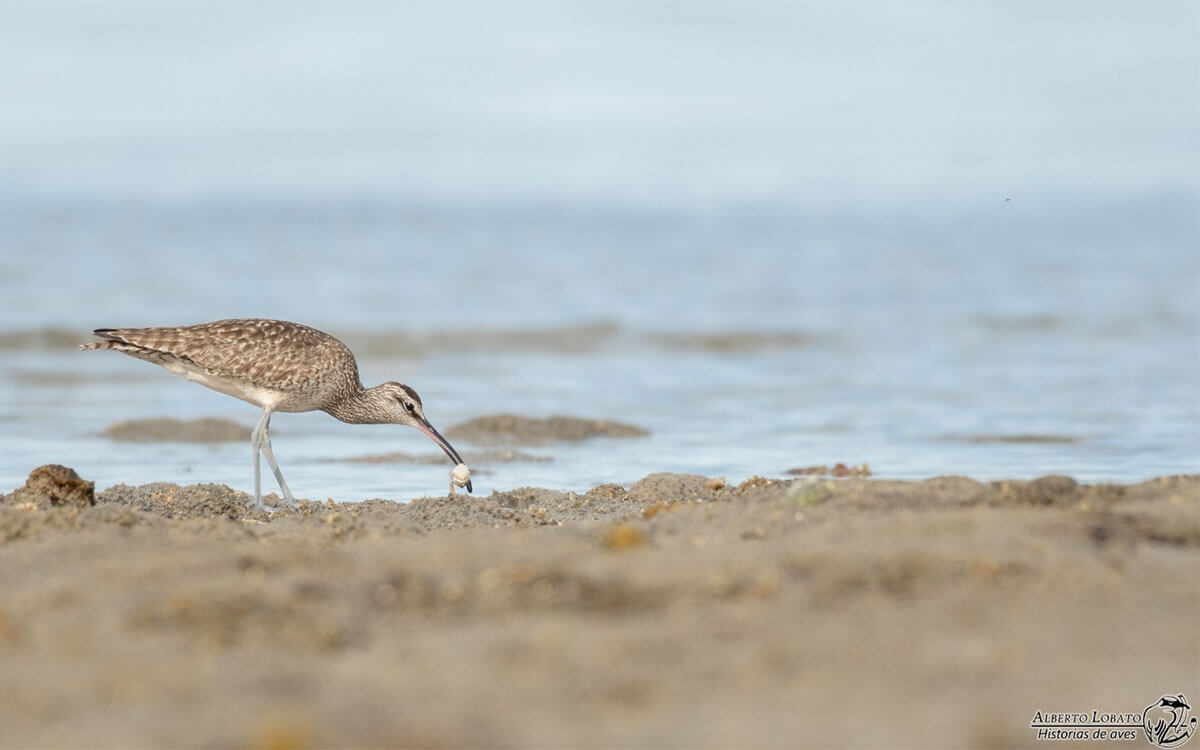
Whimbrel. Photo: Alberto Lobato.
The data generated by the Migratory Shorebird Project in Mexico are compiled in a database accessible to the public via the Internet. These data have allowed us to evaluate the factors that influence the abundance and distribution of shorebirds during their non-breeding stay, and it is hoped that these findings will inform management decisions and further develop practices and strategies to improve the quality of shorebird habitats.
Cover Photo: Flock of Red Knots, Dowitchers and Black-bellied Plovers at Ojo de Liebre Lagoon, Baja California Sur. Photo: Alberto Lobato.





